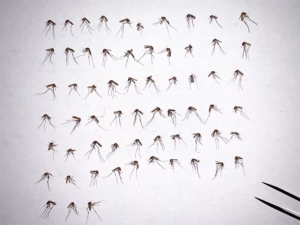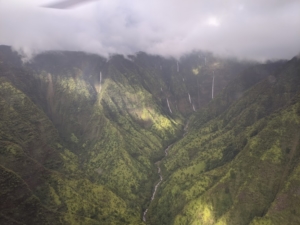On Wednesday December 16th at noon, Dr. Lisa ‘Cali’ Crampton will be giving an update on KFBRP’s mosquito work. The talk will be hosted by the Hawaiʻi Invasive Species Council for their Brown Bag Program. Find the Zoom link on our Facebook Page.
Allie Cabrera, our Avian Conservation Field Assistant recaps mosquito field season highlights below.
We’ve been busy buzzing around Kokeʻe and the Alakaʻi Plateau this year, continuing our research on the distribution of the Southern House Mosquito, Culex quinquefasciatus. This species of mosquito is responsible for spreading avian malaria to the highly susceptible, and quickly diminishing, population of native and endemic forest birds that occupy the remote regions of the island. One bite from an infected mosquito can prove fatal for many of these endangered birds. Throughout the years of the study we have been monitoring relative abundance, spatial distribution and breeding pools in order to implement landscape level mitigation in the future.
We have just wrapped our latest field study which ran from mid-August through November. Data was collected from six sites, two roadside and four remote, ranging in elevation from 1,051ft to 1,381ft. In total we collected 463 Culex specimens. Our lowest elevation site located along Camp 10 road in Kokeʻe yielded the highest amount of captures, 180, while our highest elevation site Halepaʻakai, had the least amount at 20 captures.
During each site visit, a larval survey was conducted in order to locate breeding pools. When mosquito larvae were detected, samples were taken, using a dip cup or baster, and transported back to our office bug house. In most cases, the larvae found were Aedes japonicus, not the malaria carrying Culex. On the pothole-riddled, rugged dirt road leading to our Camp 10 trap sites, we surveyed several large ruts. We found these ruts to contain hundreds of Culex larvae. With the help of our KUPU crew, we were able to drain and fill in these Culex breeding hotspots.
The KFBRP “SWAT Team” will continue to contribute to this study in the new year, starting in the spring and working through early summer.




 Lucas Behnke
Lucas Behnke